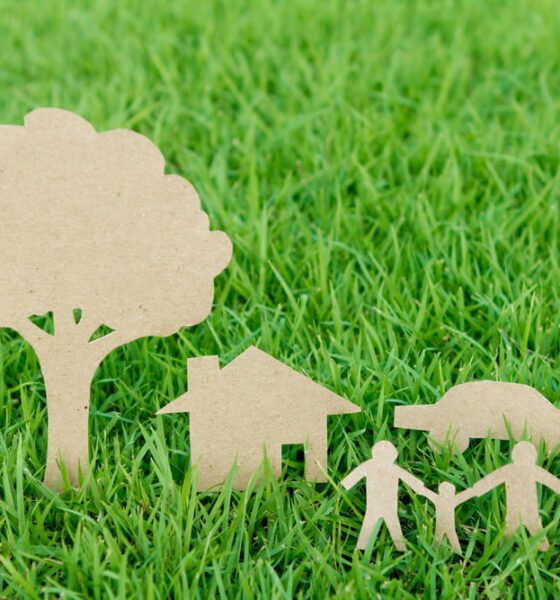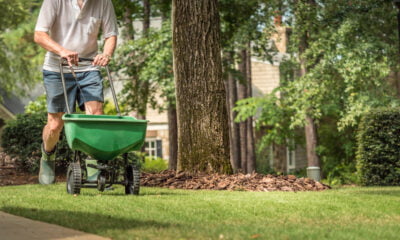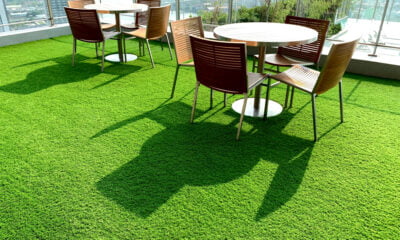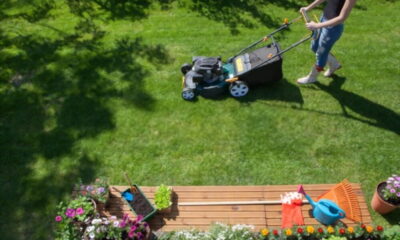When you are cutting your showers to a tight five minutes, reusing the water you use to boil pasta and veggies, only flushing the toilet when absolutely necessary and installing a rain barrel in your backyard, it’s clear that you care about water consumption and the environment. However, it’s also especially hard to ignore one major waste of water around the home: your lawn.
Lawns are the number-one most plentiful irrigated crops in the United States, beating out enormous cash crops like cotton and corn. Unfortunately, because turfgrass contributes little besides property aesthetics, many people see lawns as a huge waste of resources. Still, you might like your lawn; it is an attractive feature of your landscaping and a place where you can relax and play. Is there any way you can make your lawn eco-friendly and water-wise?
Short Answer: Yes
However, before you navigate away from this post, you might want to read the long answer. Grass can grow efficiently, using few resources and producing little waste, but only when it is enjoying peak health. Unfortunately, grass is rarely enjoying peak health; because turfgrass does not grow naturally in the state most homeowners prefer — and because most homeowners don’t understand the extent or the detail of perfect lawn maintenance — grass is often suffering some sort of ill that demands extra water, chemical pest control or something else less eco-friendly.
Here are a few tips for keeping your lawn healthy and green:
- Water deeply and infrequently. Your lawn needs at least 1.5 inches of water per week, and the more of that you can administer at one time, the better. This encourages the roots to grow deep. Additionally, you need to water at the right time of day, so your soil doesn’t become waterlogged but it does absorb most of the moisture.
- Feed the lawn correctly. Grass typically needs to be fertilized once a year, in the spring or the fall. However, fertilizer does contain some toxic compounds and nutrients that can cause environmental issues, like phosphorus, so it’s important to avoid over-fertilizing and to choose the best type of fertilizer for your lawn.
- Mow high — or mow low. The type of grass making up your lawn should determine the height you set your mower blades. Cool-season grasses need to be kept between 3 and 4 inches tall, while warm-season grasses can stay cropped around a half-inch. During growing season, you need to mow frequently, potentially once or twice per week, to maintain the right height.
The truth is that you should probably invest in professional lawn maintenance to reduce the resources consumed and waste produced by your lawn. This is especially true if your lawn or yard is often beset by pests. You can use resources like TruGreen.com to find eco-friendly lawn solutions to ensure your entire lawn remains impeccably maintained.
Size and Design
While proper maintenance is the most important predictor of an eco-friendly lawn, there are other things you can do to improve the resource-efficiency of your turfgrass. Perhaps the most popular option, decreasing the size of your lawn will without a doubt decrease the amount of water, fertilizer and other resources you use to keep the grass alive and healthy. Fortunately, there are a few different ways you can cut your lawn back:
- Black plastic sheeting. Lay a sheet of black plastic over the area of lawn you no longer want. After about six months, the grass should be thoroughly dead, and you can use a hoe break up the soil.
- Sheet composting. Cover the unwanted portion of lawn in heaps of organic material, i.e. compost. The decomposing material should also decompose your lawn over the course of four to six months.
- Rototilling. Rent a rototiller from a tool rental supplier and run it over the unwanted section of lawn. You should repeat this process at least three times to remove all remnants of grass and weeds.
If you aren’t particularly interested in shaving your lawn down, you might also consider improving its efficiency by adding other types of ground cover to the grass. When lawns first became popular, the seed was sold with other plant seed mixed in, like clover, chamomile, sweet woodruff and thyme. Not only did this mixture provide a more interesting visual in the lawn, it also improved the health of the lawn. Because eco-friendly lawn maintenance is rising in popularity, you can find similar seed mixes nowadays, but you can also make your own by tossing a handful of seeds into your existing lawn — and telling your lawn care service about the switch.
Lawns don’t immediately lend themselves to the sustainable lifestyle, but that doesn’t mean you can’t enjoy a lush, green lawn and the eco-friendly label all at once. With some hard work and some changes in styling, your lawn can be green — in both senses of the word.




























